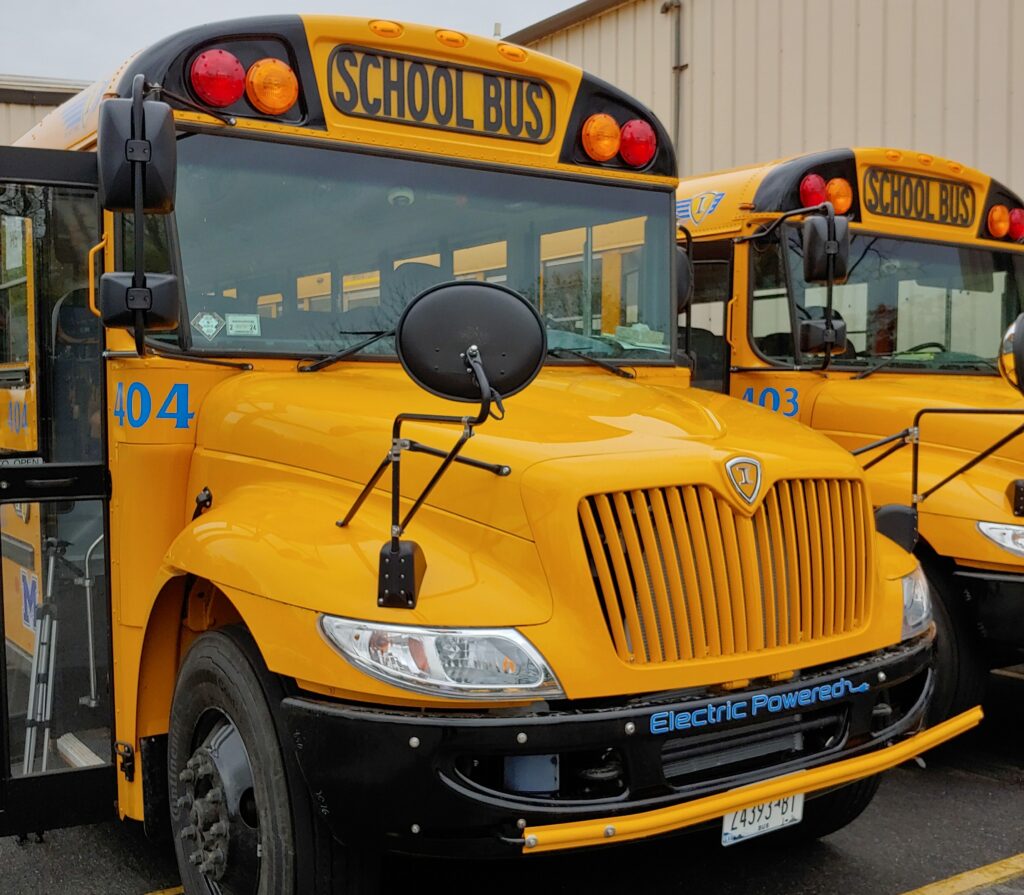by Keiko Niccolini, Senior Organizer for Hudson Valley Mothers Out Front
Most school buses in New York run on diesel fuel and spew exhaust that impacts student health. As our understanding of the dangers of diesel exhaust pollution continues to grow, the time has come to reimagine this classic form of student transportation. This is particularly critical in our underserved, environmental justice frontline communities, who experience the worst effects of air pollution.
State legislators recognized this challenge when they committed to a zero-emission school bus fleet by 2035. The voters of New York weighed in, approving $500 million for electric school buses. Now, school districts and other school bus operators have an unprecedented opportunity to access funds and technical assistance to bring electric school buses to our communities.
The first portion of the $500 million voter-established NY School Bus Incentive Program is now open for applications. Districts should seize this chance to invest in electric buses and charging infrastructure.
Additionally, the EPA’s Clean School Bus Program (CSBP) is making $5 billion available to districts and fleet operators across the country, including here in New York. The Inflation Reduction Act of 2022 allows school districts to take advantage of incentives for both vehicles and charging infrastructure, and a number of state, local and utility programs exist as well – funding that can be stacked with federal money to cover the full cost of an electric school bus. There are also a variety of electric school bus business models that can help districts go electric in a way that best fits their needs.
Charging infrastructure, an integral part of any electric school bus operation, is always top of mind in discussions about electric buses. Many funding programs allow for investments in chargers. By growing their electric fleets over time, and optimizing charging and other operations, districts can often avoid many infrastructure investment costs in the first place.
Transitions like this can seem overwhelming: building, financial modeling, negotiating across multiple departments and stakeholders can feel like more than any person or small group can handle. But realizing a just, safe and clean public transportation system is well within our reach. In 2022, local leaders Patty Buchanan from Croton Cure 100, and Cristina Alvarez-Arnold and Donna O’Malley from Mothers Out Front-Northern Westchester Team successfully led a campaign that resulted in the transition to electric school buses in the Croton Harmon Unified School District. Croton now has two electric school busses, with another on order.
Now, these women are mentoring a new group in neighboring Peekskill – the Peekskill Electric School Bus Coalition – a group focused on bringing the financial, public health and environmental benefits of zero-emission electric school buses to its community. Peekskill, just north of Croton-On-Hudson, is a frontline economic and environmental justice community with high rates of asthma. This local coalition, made up of the Peekskill NAACP Environmental Justice Committee, Peekskill Cure 100, Peekskill Conservation Advisory Council and other community members, with the guidance of their experienced neighbor partners and support from national groups including: Mothers Out Front, World Resources Institute, and the League of Conservation Voters, seeks to deliver expertise in school bus electrification project components to their school district including accessing and stacking local, state and federal grant funding, financial modeling, project management, technical integration, procurement support, implementation, community education and campaigning.
Electric school buses can work for everyone. There are multiple models of every type of electric school bus that include ADA-compliant wheelchair lifts. Current electric school bus battery ranges can already cover most bus routes, and ranges continue to grow as technology advances. Electric school buses can also extend their range through a process called regenerative breaking, where the bus can effectively recharge its own battery while driving.
School districts in New York have already demonstrated their interest in zero-tailpipe-emissions electric school buses: over 99 percent of New York applicants for the CSBP chose electric over other fuel types. More than $58 million in federal funding was awarded via the CSBP’s first round to help bring some 150 electric buses to districts across the state – and 90 more New York districts were waitlisted for funding, representing demand for an additional 790 electric buses. Eight school districts in New York are already successfully operating electric school buses, and now, with the application portal for the NY School Bus
Incentive Program open, there’s never been a better time for districts across our state to bring quiet, safe, and reliable rides to school for students and communities that need them the most.








